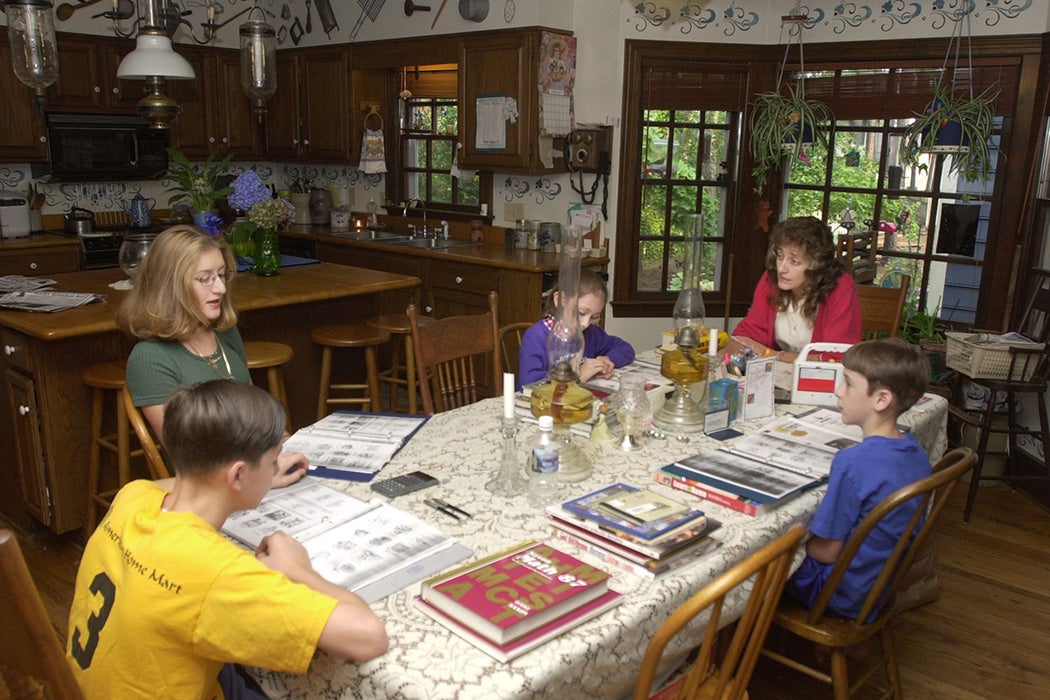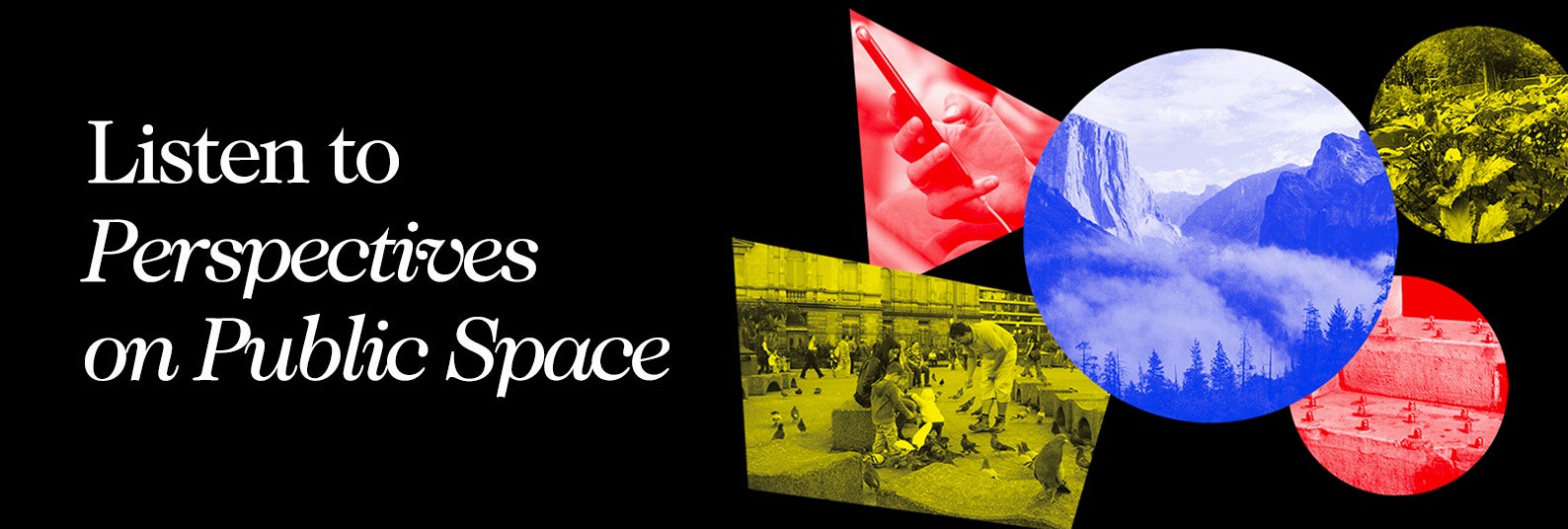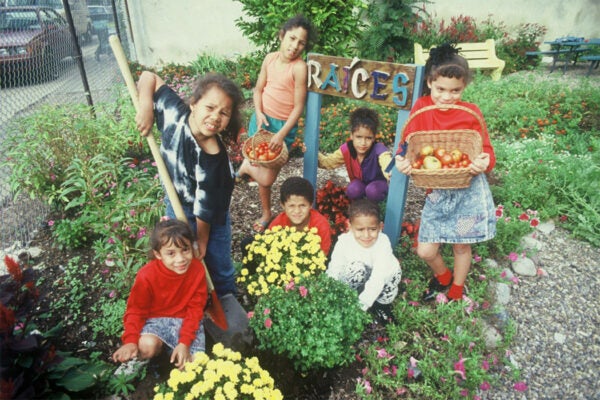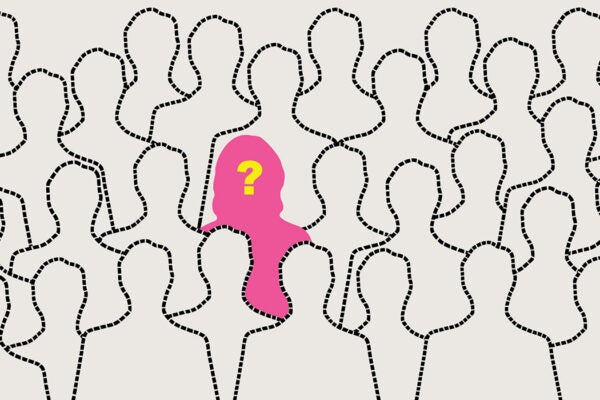We are in the midst of a homeschooling boom. The US Census Bureau reported that, between the spring of 2020 and the beginning of the new school year later that fall, the number of homeschooling families had doubled, to 11.1 percent of all US households. Among Black families, the Census Bureau found that the share had increased by five times, from 3.3 percent in the spring to 16.1 percent in the fall.
Like many pandemic-induced changes to American society, what remains to be seen is whether homeschooling is having a moment, or whether it is establishing itself as a permanent feature among educational options in the US. There are reasons to suspect it could be the latter. Chalkbeat, in collaboration with the Associated Press, reported on how public school districts across the country, anxious about prolonged declines in enrollment, are trying creative ways to register families—including equipping bus drivers to call parents. An analysis by the New York Times and Stanford University compared fall enrollment numbers in 2019 and 2020, and found that 10,000 public schools across 33 states saw their kindergarten populations shrink by at least 20 percent. Their reporting also indicates that some of these schools are concerned that the numbers aren’t likely to bounce back in the fall of 2021.
Weekly Newsletter
In the midst of what looks to be a new era for interest in homeschooling, scholarly investigations into its challenges, cultural forms, and outcomes are more relevant than ever. But while curiosity about homeschooling is especially pronounced now, homeschooling has tracked a steady uptick in the US since the 1960s.
Five Phases of Development
The path from marginal educational choice to widespread legal and cultural acceptance has not been without its share of conflict and pushback. The education scholars J. Gary Knowles, Stacey E. Marlow, and James A. Muchmore trace this dramatic history in an article in the American Journal of Education, breaking the early growth of US homeschooling into five phases.
These scholars point out that while, for centuries, most children around the world were educated at home by parents or tutors, there was a marked shift toward schooling away from home by the mid-1800s, when compulsory, formal education emerged in the US. Between 1850 and 1970, few families educated their children at home. But in the mid-1960s and early 1970s, with stirrings of dissatisfaction with the public-school system, homeschooling began to catch on.
These stirrings kicked off phase one of the researchers’ five phases: the “contention” phase. This phase was characterized by education reformers vocalizing their concerns about the shortcomings of traditional schooling. By the broader public, homeschooling was considered to be strange, one conducted by people on the fringes of society. “In the early 1970s,” the authors write, “home education was segmented and was seen primarily by the public and media as a subversive educational activity carried out by idealists, often surreptitiously or underground.” What’s more, it was illegal in most states.
The second phase, “confrontation,” began in the early 1970s and peaked at the end of the decade, bringing with it some high-profile legal fights. In 1972, the Supreme Court heard Wisconsin v. Yoder, which proved to be a seminal moment for the homeschooling movement—ultimately granting Amish parents the right to educate their children at home after eighth grade. At the same time, the decision qualified that “the parental interest must be religious in nature rather than philosophical or personal.” This decision kicked off a host of state-level court cases addressing a number of issues related to home education. Knowles, Marlow, and Muchmore note that “while most litigation proceedings were initiated by school officials, in most states a majority of legal cases in the 1970s were decided in favor of the parents.” Still, homeschooling would not be legal in all 50 states until 1993.
The third phase, “cooperation,” emerged from the easing of legal restrictions and the enactment of new policies that allowed homeschooled students to use public-school facilities. By 1985, some estimates report that approximately 200,000 US families homeschooled their children.
In the early 1990s, the fourth “consolidation” phase marked a new strength in homeschooler networks and lobbying power.
The final stage, “compartmentalization,” evolved soon after, as homeschooling became more widely accepted and the “strange bedfellows”—as the journalist Kathleen Cushman put it—comprising the homeschooling movement no longer had to form a united front against other educators. These “strange bedfellows” consisted of families who were motivated by religious beliefs, by pedagogical ideals, by a desire to foster close family relationships, and by a host of other overlapping reasons. Another reason motivating some families: the desire among families of color, especially Black families, to protect their children from pervasive racism in the educational setting.
Parents’ Motivations for Homeschooling
Researchers Oz Guterman and Ari Neuman presented questionnaires to 62 homeschooling parents in Israel. Based on their responses, they divided the parents into two groups: those whose reasoning for homeschooling was “pedagogical only” (or squarely focused on curricular control and a concern about a low standard of education in schools), and those whose reasoning was driven by “pedagogical and family reasons” (that is, a desire to foster strong relationships among the family unit, sometimes coupled with a responsiveness to children’s health needs).
In their paper in the International Review of Education, “Different Reasons for One Significant Choice: Factors Influencing Homeschool Choice in Israel,” they describe their findings. It turned out that families who decided to homeschool based on both pedagogical and family reasons viewed the impact of homeschooling on their children more positively than did those in the “pedagogical-reasons only” camp:
It is possible that families who choose homeschooling for family-related reasons as well dedicate more time to other activities, such as family trips, joint preparation of meals and so on… The two groups of families may view the very definition of learning differently.
They found that parents whose motivations were strictly pedagogical devoted more hours per week to learning.
The mindsets that parents bring to homeschooling also may be tied to their experiences of burnout, finds researcher Jennifer Lois. In her article in the journal Symbolic Interaction, she explored how homeschooling parents (all mothers, in her study) adjusted to their roles. She found that they were often optimistic in the early days, but that balancing the teacher role against various other parenting and domestic duties could quickly overwhelm. In her ethnographic study of a homeschooling support group—and in interviews with 24 homeschooling mothers in the Pacific Northwest—she found that some types of “emotion work” did help homeschooling mothers reduce and overcome burnout.
She concludes that the mothers who moved past (or completely avoided) burnout did so by achieving what she called “role harmony”—that is, finding ways to integrate and prioritize their various roles. For one thing, they prioritized the role of mother over the role of homemaker, which meant, for example, that they lowered their standards for housework in favor of more time with their children. They also tended to relax their curricular structure and devise more independent learning opportunities for their kids, adopting more of a “facilitator” role. Importantly, Lois also found that homeschooling moms who moved past burnout almost always had partners who supported them in their housework, childcare, and teaching duties.
What about the Kids?
How does homeschooling affect the children themselves? Plenty of researchers have sought answers to this question, too. In an article in the International Social Science Review, the education scholars Cynthia K. Drenovsky and Isaiah Cohen had 185 college students complete a questionnaire—35 of whom had been traditionally schooled and 150 of whom had been educated at home for at least one year. The questionnaire sought to measure their engagement on campus (for example, via participation in internships and student-faculty research) as well as their self-esteem and self-reported symptoms of depression.
The researchers found that, while levels of self-esteem didn’t significantly differ, the homeschooled students had lower depression scores and higher reports of academic success. They also tended to rate their entire educational experience more positively.
In “Differences in Competence, Autonomy, and Relatedness between Home Educated and Traditionally Educated Young Adults,” the educational psychologist Gina Riley gets into the question of outcomes for homeschooled children from a slightly different angle. She is curious about the “social and environmental factors that facilitate rather than undermine intrinsic motivation,” and points to three psychological needs that help foster self-motivation:
• competence (the need to successfully solve a problem or figure something out);
• autonomy (the need for a sense of choice and self-direction); and
• relatedness (the need for a sense of connection to others in the learning setting).
Riley sought to test whether homeschooled young adults’ needs for competency, autonomy, and relatedness were better satisfied than in peers who were traditionally schooled. To do this, she administered the Basic Psychological Needs Scale to 58 homeschooled students and 41 traditionally schooled students. Her results suggested that, on average, homeschooled students had higher levels of satisfaction in their autonomy and competence—with no difference on relatedness.
With homeschooling sharply on the rise, these findings are heartening. But it’s also important to note that homeschooled children are likely, in certain ways, to be a privileged group—many researchers find that their parents tend to have higher education and income levels than average, not to mention a strong commitment to their children’s education.







